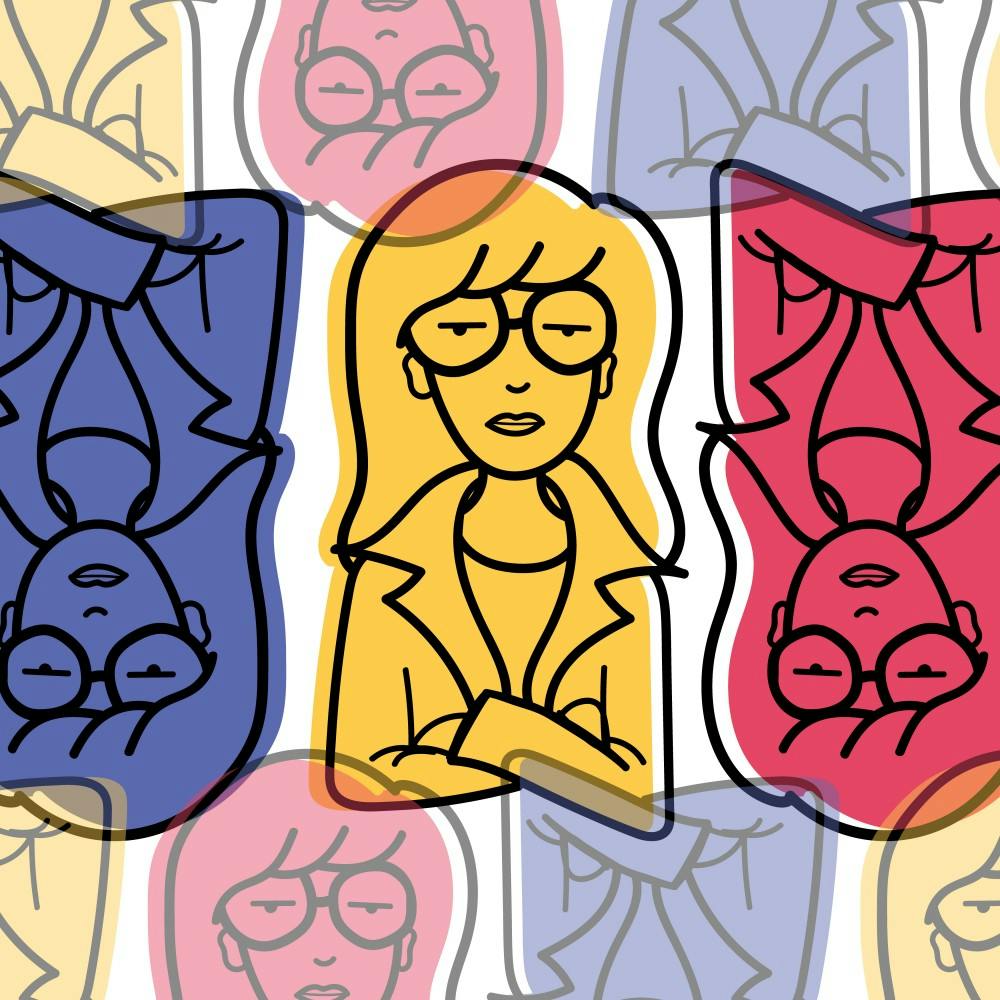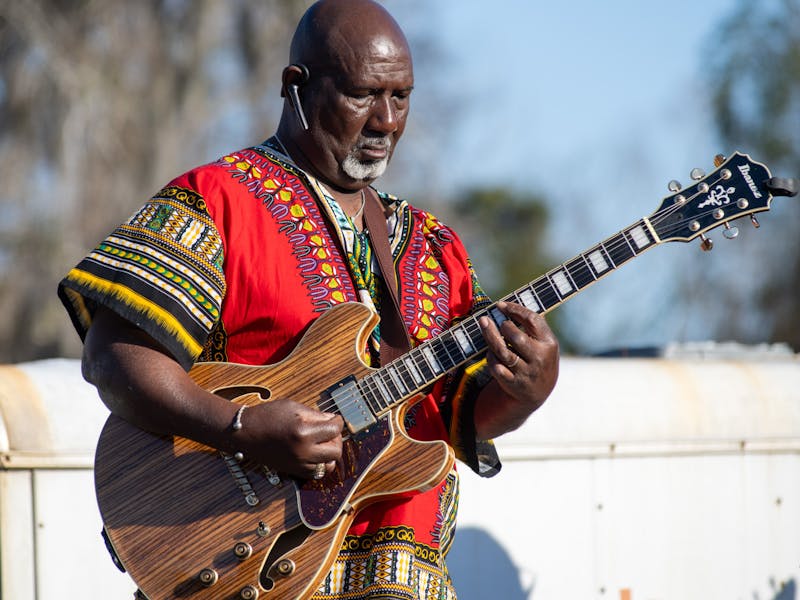Illustration by Emily Schoonover
Pretty, submissive, nice and maybe a little oblivious.
This stereotype sums up just about the extent of T.V. heroines in the 20th century – especially for teen audiences. But in the more modern era, girls are allowed to be strong, allowed to be negative and allowed to be maybe not all that sexy.
To what is this shift in the female portrayal due?
If you lived in the 2000s, you know Daria Morgendorffer. Daria is the titular character on the MTV animated dramedy that ran from 1997 to 2001. She's a misanthropic, sardonic high schooler just trying to get through the day, all while surrounded by people so unlike her. This sense of “unalikeness” and lack of fitting in contributed to said the shift in female portrayal: Because why would Daria feel out of place if all the female characters were of the same mold?
Daria is a walking oxymoron of sorts. She marches to the beat of her own drum, but finds it easier to just fit in. She’s aware of her differences, but instead of seeing them as shortcomings, she sees them as points in which the world falls short.
When her parents ask why she didn’t smile for her school picture, reasoning that “people judge you by your expressions,” Daria replies: “I believe there is something intrinsically wrong with that system, and I’ve dedicated myself to changing it.” She is unique in ways that don’t draw attention to herself; attention involves interaction, to which she is acutely opposed.
Jane Lane, Daria’s laid-back and artistic best friend, is not drawn to Daria because of their similarities. She is more outstanding as opposed to Daria’s eternal wish to fly under the radar, but they share a sense of camaraderie in the dislike of their peers. Unlike her best friend, Jane is very open to trying new things, no matter how others (including Daria) may react. Out of pure curiosity, Jane joins the track team, a group made up of her polar opposites. She promptly leaves when she notices the “popular kids” start to affect her, preferring the “outcast artist” label even when immense popularity is willingly offered.
Jane doesn’t take herself terribly seriously; she enjoys making sarcastically melodramatic comments about her artistic tendencies. When forced to paint a dull still life in art class, she mutters snidely to Daria, “How I long for a medium grand enough to do justice to my inner torment.” Her deadpan demeanor and contentment with her outlier position set her apart from the stereotypical love-longing and flowery female artist type so often seen.
Meanwhile, there’s Quinn, who fits quite well into the traditional mold of a female character. Daria's sister, is effervescent, popular and positive. Quinn acts as a foil to her sister by combating cynicism with belief. She is an antithesis but not an adversary – there are no catfights.
Her air-headed mask is, on occasion, revealed to be just an act. Quinn is not dumb, she merely does not define herself by her brains as her sister does. Her character’s development focuses on her realization that her popularity isn’t fulfilling, noted when she says, “Sometimes I’m walking down the hall… and suddenly I’m outside of myself, watching, and it’s like, ‘Who are these girls? Can’t they talk about anything besides guys and clothes and cars?’” Quinn is, after all, related to Daria, and therefore possesses her sister's self-awareness.
We also meet Jodie, one of the few African American students at the local high school. She is brilliant and quick-witted like Daria, but more socially adept. She is quite aware of the whiteness of her community, and feels immense pressure to overachieve in order to stand out for her brains and not her color. Coming from a rather upper-class family who pushes her to bulk up her college applications, Jodie is pushed and pulled in many directions, but has a constantly cool demeanor. What makes her character so dynamic is that she is so far from any form of stereotype. She is not written simply as a sassy entertainer, instead as a human being with a unique personality and brain.
The characters on "Daria" are teenage girls who happen to be human. Some enjoy popularity, like Quinn, while others prefer observing and analyzing from the outside, like Daria. A common thread between these characters is that their storylines do not revolve around boys. In fact, female characters outnumber that of their male counterparts, as opposed to many shows with a primarily male cast. All things considered, Daria showed viewers that young women are made of differing ratios of brains, heart and soul, not plastic.



